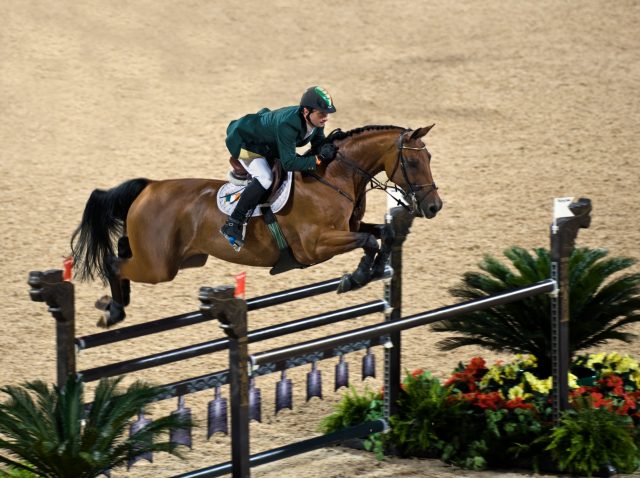Type the name of the breed you're looking for below
[wpdreams_ajaxsearchlite] Don't see the breed your're looking for? Click here and let us know!
Hanoverian horse
| Country Of Origin | Germany |
| History and Background | A Hanoverian is a warmblood horse breed originating in Germany, which is often seen in the Olympic Games and other competitive English riding styles, and have won gold medals in all three equestrian Olympic competitions. It is one of the oldest, most numerous, and most successful of the warmbloods. Originally a carriage horse, infusions of Thoroughbred blood lightened it to make it more agile and useful for competition. The Hanoverian is known for a good temperament, athleticism, beauty, and grace. In 1735, George II, the King of England and Elector of Hanover, founded the State Stud at Celle. He purchased stallions suitable for all-purpose work in agriculture and in harness, as well as for breeding cavalry mounts. The local mares were refined with Holsteiner, Thoroughbred and Cleveland Bay, Neapolitan, Andalusian, Prussian, and Mecklenburg stock. By the end of the 18th century, the Hanoverian had become a high-class coach horse. In 1844, a law was passed that only allowed stallions that were passed by a commission to be used for breeding purposes. In 1867, breeders started a society aimed at producing a coach and military horse, with the first stud book being published in 1888. The Hanoverian became one of the most popular breeds in Europe for coach and army work. When the demand for Hanoverians declined following World War I, the aim for breeding became a horse that could be used for farm work, but still had the blood and gaits to be used as a riding and carriage horse. After World War II, there was a growing demand for sport horses, as well as general riding horses, and the breeding yet again was adapted. Thoroughbreds were used to refine the breed; occasionally an Anglo-Arabian or Trakehner stallion was used. The key to the success of the Hanoverian has been the rigorous selection of breeding stock, a large breed population, and the breeders' willingness to adapt to changes in demand. Today, the Hanoverian breeders' association offers many incentives to breed the best, including the famous auctions at Verden, and extensive grading opportunities for stallions, mares and young horses. In addition, few breeds have such well-kept records, allowing the breeders to trace bloodlines over many generations, improving their chances to find the best stallion-mare match. The current aim of the breeders today is to create a noble, versatile warmblood with light, elastic, and ground-covering gaits. Whenever necessary, outside blood is brought in to improve the horse. The strict selection ensures that Hanoverians are athletic and good jumpers, for show jumping and eventing, and have the gaits for dressage. |
| Use Today | Eventing horse, Competition horse, Show horse, Pleasure horse |
| Height | 15.3–17.2 hands (63–70 inches, 160–178 cm) high |
| Colour | Bay, Black, Chestnut, Grey |
| Characteristics | The Hanoverian is a large horse with a straight, outlined head, clear eyes and small ears. Its neck is slender yet muscular. In addition, the Hanoverian has brawny shoulders, a deep, broad chest and sturdy legs with flexible joints. The horse's coat, which is bay, brown and black in colour, is thick, as are its tail and mane. |
| Personality and Temperament | Aside from its extraordinary physique, the Hanoverian has a very outstanding attitude; it is determined, docile and, most importantly, disciplined. |
| Other Considerations | The breed is commonly used in various sports including dressage, show jumping, eventing and as show hunters. They are one of the most important breeds of sport horses in the world. They are Olympic and World champions and have won the largest number of Worldcups that any other horse breed. They are also used as riding horses, for leisure and trail riding. |



